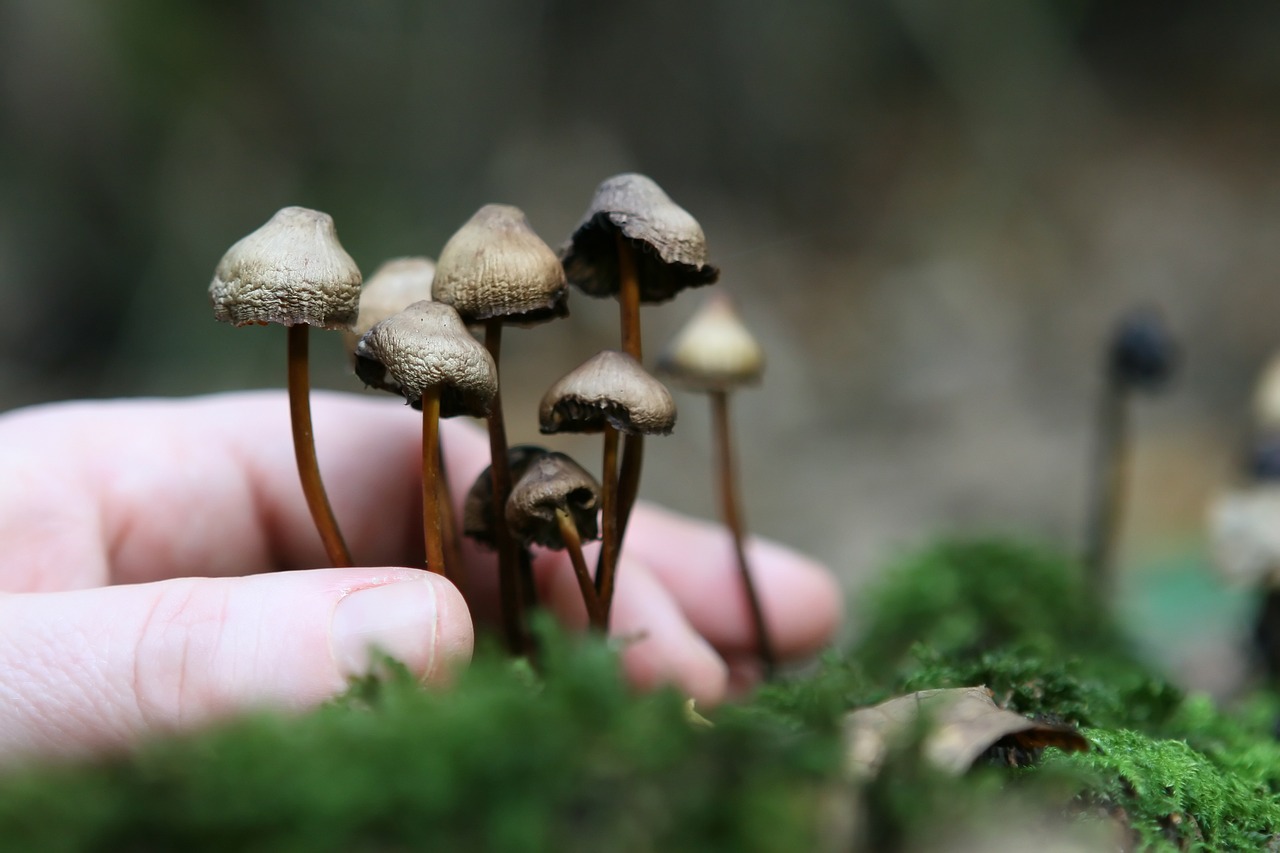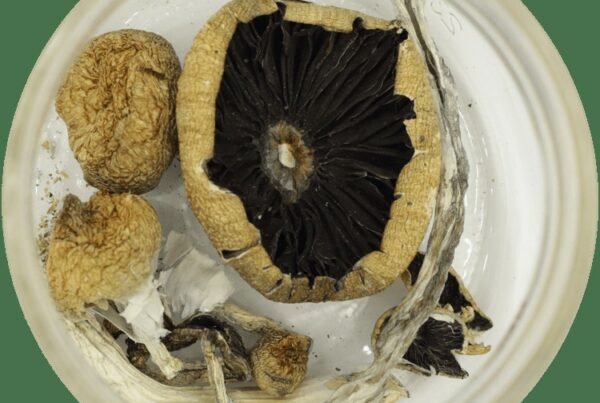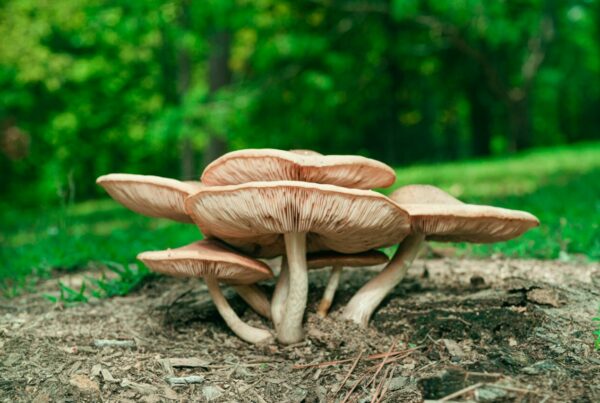The Essentials of Mycelium
Mycelium, serving as the root structure for fungi, essentially acts as the digestive system for mushrooms. It hunts for nutrients, converts them into a form that the fungus can absorb, and nourishes the fungus. This process’s byproduct enriches the soil around it, providing vital nutrients for other plants and producing a nutrient-rich biomass ideal for gardening mulch.
Beyond their function in mushroom growth, mycelium networks are crucial to many terrestrial plants’ health and growth, including trees. For example, tree roots form a symbiotic relationship with fungi, with the tree supplying the fungus with carbon in the form of sugars and the fungus providing the tree with essential minerals like nitrogen and phosphorus. Discover more about this relationship here.
Fascinatingly, mycelium networks operate similarly to an underground communication system among plants, akin to our brain’s neural networks. Current scientific studies imply that plants and trees may have rudimentary nervous systems that fungi might influence, impacting aspects such as communication, memory, and learning. Moreover, mycelium improves soil health through the consumption of decaying organic matter and the detoxification of existing pollutants.
If you’re keen on cultivating magic mushrooms, it’s vital to understand mycelium’s growth. The cultivation process may be daunting for novices, but acquiring knowledge about mycelium is an essential starting point. While you can always buy mushrooms from Mushroom Canada online, learning about mycelium can enrich your cultivation journey.
Mycelium: The Growth Journey
When fungal spores find a suitable growth environment, they start the formation of two kinds of mycelium. The first, referred to as primary or monokaryotic mycelium, is defined by a single nucleus in each cell and is typically invisible to the human eye. The second kind, termed secondary or dikaryotic mycelium, is visible and contains two nuclei per cell.
Once fungal spores germinate, they start to form a primary mycelium, also known as the monokaryotic mycelium. When this primary mycelium encounters another compatible one, they unite to create the second stage, the dikaryotic mycelium. It is this secondary mycelium that has the capability to yield mushrooms or sclerotia.
Types of Mycelia
There are three distinct types of mycelia, two of which signify successful cultivation.
- Rhizomorphic mycelia spread out like a network of strings. It’s easy to identify these mycelia, which, like all other types, are made up of units called hyphae. The rhizomorphs represent the network of clustered hyphae. Initially, the rhizomorphic mycelia expand, then they relay chemical signals back to the colony indicating that the area ahead is fit for nutrient distribution. The rest of the mycelia then follow suit. The hyphae at the rhizomorphic mycelia’s tip secrete peroxidase that breaks down the material in front of it for nourishment. The hyphae then stretch across the material, spreading the nutrients throughout the colony. This type of mycelia is preferred by many cultivators due to its higher chance of mushroom production when the Rhizomorphic mycelia sprout from the substrate.
- Tomentose, or “Fluffy” mycelia, are quite similar to Rhizomorphic mycelia, but the arrangement of the fluffy mycelia strands is unique. Though these strands may not be immediately visible, they are certainly there. Their cottony appearance suggests that the strands are densely packed together. Whether your mycelia become tomentose or rhizomorphic is largely influenced by the growing conditions. There’s an ongoing debate among cultivators about whether the type of mycelia impacts the growth rate or the yield.
- Aerial mycelia appear when the growing conditions are less than ideal. In such situations, the mycelia tend to grow outward rather than spreading across the medium or forming a clump. Often confused with bacterial contamination, this type of mycelia could interfere with your mushroom cultivation, leading to weaker, smaller mushrooms. Aerial mycelia usually happen due to inadequate air exchange and excessive humidity.
Is it Mould or Mycelium?
It’s vital to distinguish between mould and mycelium. If you notice green, blue, grey, or black patches on or inside your fruiting box, it’s likely that your culture is contaminated. The key sign is discoloration. However, blue spots could simply be bruises.
Cobweb moulds are typically very visible. Rather than the bright
The Mycelium is usually characterized by a greyish tone and a texture that is both stringy and fluffy. Although cobweb moulds and green moulds are not harmful to humans, they can have a detrimental impact on the health of your mushrooms.
Welcome to Mushroom Canada, Your Ultimate Guide to Mushroom Information
Whenever you think of psychedelic mushrooms in Canada, remember Mushroom Canada. We are dedicated to providing you with essential information to ensure a safe and enjoyable mushroom experience.





